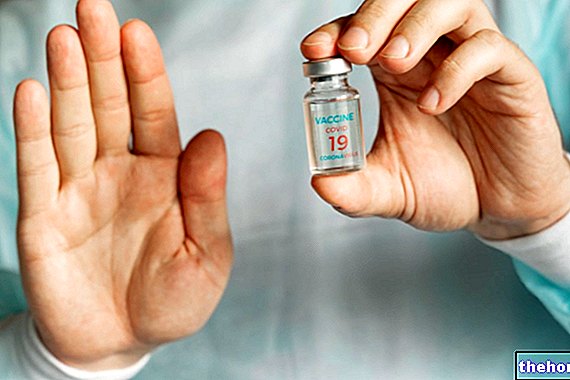Immunotherapy: therapeutic targets
Despite research efforts, the exact mechanisms leading to Alzheimer's disease (AD) remain largely unknown: this represents a limitation for the identification of possible therapeutic targets for effective immunization in preventing or modifying the disease.
The progression of the disease is not well known, but it is thought to be at least in part and for some forms of AD linked to the altered metabolism of β-amyloid and tau proteins which manifests itself as an accumulation of β-amyloid plaques and neurofibrillary tangles of tau (NFT) in the brain.
During the last decade, many efforts have been conducted by pharmaceutical companies to aim at the elimination of fragments of the β-amyloid (Aβ) peptide from the brains of patients with Alzheimer's disease by administering:
- Aβ antigens (active vaccination): patients receive injections of the same antigen;
- Anti-Aβ antibodies (passive vaccination): monoclonal antibodies (mAb) are used against various portions of the β-amyloid peptides (soluble, deposited, oligomeric).
Also in animal models, it has been shown that both the administration of vaccines and passive immunotherapy (a term used when specific activated effector immune cells are directly infused to the patient, and are not induced or expanded in the organism), led to an improvement. of cognitive performance in association with an increase in the clearance of amyloid plaque deposits.
Note. Clearance, in pharmacology, indicates the virtual volume of plasma that is purified of a certain substance "x" in the unit of time.
Studies obtained by brain imaging (in particular with positron emission tomography, PET) showed that among the participants in the clinical trials of passive immunotherapy with anti-Aβ antibodies, there was a reduction of amyloid ligands after 18 months of This suggested the potential to reduce the amount of plaque-deposited or soluble β-amyloid in the brains of Alzheimer's patients.
To date, identifying a variant of antibodies that is able to eliminate the accumulations of amyloid that characterize Alzheimer's disease, but with few side effects, remains the goal to be pursued.
Immunotherapy for Alzheimer's Disease

As far as the therapeutic aspect is concerned, the following are distinguished:
- Active immunotherapy: involves stimulating the immune system in order to obtain a direct antibody response against the Aβ protein. In other words, it is a vaccine for Alzheimer's disease.
- Passive immunotherapy: as mentioned above, it consists in the introduction of already established anti-amyloid antibodies, which have the purpose of preventing the formation of Aβ plaques or increasing their elimination.
For these reasons, the development of a strategy for a new vaccine in Alzheimer's disease represents a vast and continuously evolving area in the field of research. However, the approach pursued in most cases continues to have as its objective the "activation of B cells (through active immunization) and then the production of specific antibodies (using passive immunization).
Given the positive response from animal testing, testing of vaccines in patients with Alzheimer's disease has also begun. The vaccine, known as AN1792, was used in a sample of patients with mild to moderate dementia treated with one or more doses. The first observation was the finding of a variable antibody response, in which some of these patients did not develop appreciable results against the antigen. For this reason, halfway through the clinical trial, the addition of an adjuvant, QS- 21, in order to increase the response to the vaccine. In phase I of clinical development, a significant proportion of patients produced antibodies against Aβ, albeit with different titers, and no adverse events occurred.
Unfortunately, following the success of this study in 2001 during phase II, following the development of aseptic meningoencephalopathy (an inflammatory reaction of the central nervous system to the vaccine) in a group of patients (6%), the clinical trial was stopped. .
Despite the early termination of the trial for encephalitis cases during the phase-II clinical trial, the researchers continued to monitor the patients enrolled in the study, measuring their antibody response with promising results.
Follow-up of immunized patients with tests to assess cognitive function showed that in the year following the development of the antibody response to the vaccine, patients exhibited less cognitive decline than patients in whom no detectable amount of antibodies was present. , some of these patients, following the initial treatment which was then suspended, showed a certain stability in the following years, this indicating that the immunotherapeutic approach may still prove beneficial, despite the possible adverse reactions highlighted. Finally, the results of post mortem biopsies showed that there was a sign of reduced Aβ deposition in some patients, as well as significant reduction of plaque deposition in several cortical regions. The residual plaques showed a particular appearance suggesting microglia phagocytosis.
active vaccination (responsible for the adverse effects of the vaccine), while maintaining the important biological activities associated with the efficacy on amyloid deposits.
Due to the low vaccine response observed in the various clinical trials undertaken, and the onset of various T cell dependent side effects, many scientists have begun to evaluate passive immunotherapy treatments with anti-amyloid monoclonal antibodies.
The first studies conducted on animal models for Alzheimer's disease showed that following intracranial administration of anti-amyloid antibodies, changes could be observed in amyloid accumulations and in the activation of microglia (cells which, together with neurons, constitute the nervous system), in a fairly rapid time. For example, it was observed that in a week, where the administration of antibodies was carried out, there were brain regions that were "cleansed" of accumulations of amyloid and free antibodies.
The efficacy of passive immunotherapy in animals with amyloid deposits, in which the systemic administration of antibodies was carried out, was subsequently verified. These animals were given systemic administration at an "age of 18-22 months, which corresponds to an" age of 65-75 years in humans. A reduction of compact plaques of 90% was observed compared to control animals. who were given control antibodies instead.
A first report on this experiment, however, revealed that passive immunotherapy can cause micro-hemorrhages in animals with amyloid deposits at an older age. shown some benefits in regards to memory recovery.
To obviate the adverse effect of micro-haemorrhages, the antibodies were modified with appropriate enzymatic deglycosylation techniques.
Obviously, the problems associated with active immunization have prompted several pharmaceutical companies to orient their clinical studies using monoclonal antibodies against the β-amyloid protein. These antibodies include bapineuzimab (AAB-001), tested in two important clinical studies on patients. with mild to moderate Alzheimer's.
Bapineuzimab is a recombinant Aβ monoclonal antibody directed against the N terminus of Aβ (AAB-001), which is administered intravenously. The AAB-001 antibody is a humanized version of the m3D6 mouse monoclonal antibody directed against the first 8 amino acids at the N end of Aβ which has been shown to decrease amyloid plaques in mouse models of AD.
Currently, the second generation of active vaccines has shown a good safety profile and indications of a possible clearance of Aβ peptides in the brain of AD patients, but these results need to be investigated. Active Aβ immunotherapies are in clinical trials. CAD106, ACC-001 and Affitope AD02) and passive anti-Aβ immunotherapies (gantenerumab and crenezumab).
Sources used
- Background Paper Alzheimer Disease and other Dementias, B. Duthey, Ph.D; S. Tanna (20 February 2013 Update on 2004 BP 6.11 6.11, Priority Medicines for Europe and the World "A Public Health Approach to Innovation"
Other articles on "Vaccines and Immunotherapy for Alzheimer's Disease"
- Alzheimer's Disease - Definition, Symptoms, Causes
- Alzheimer's Disease - Diagnosis
- Alzheimer - Morphology, Pathogenesis and Neurochemical Aspects
- Alzheimer's Disease - Cures and Treatments
- Alzheimer's - Treatments for Behavioral Disorders and Alternative Therapies
- New Alzheimer's Drugs and Research Strategies




























